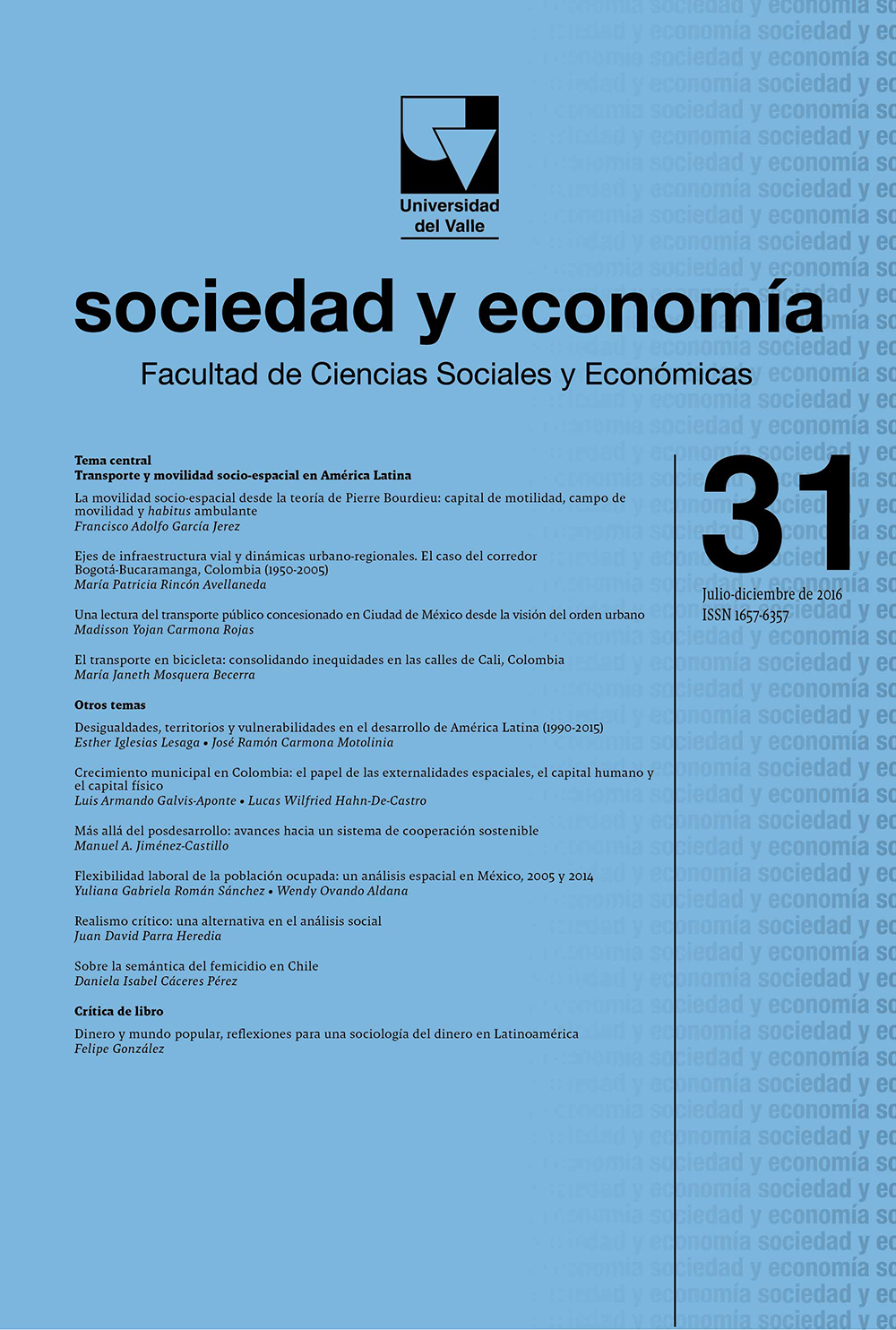Labor Flexibility of the Working Population: a Spatial Analysis in Mexico, 2005 and 2014
Published:
2016-07-15
Keywords:
Labor market, labor flexibility index, regional differences.Main Article Content
This article aims to analyze regional differences in working conditions of the workingpopulation in Mexico. To do this, an index of labor flexibility is estimated considering theyears 2005 and 2014. The study is based on the Labor Market Segmentation Theory. Theresults show the existence of regional differences in Mexican territory which enable toidentify a spatial pattern that is displayed in 2005 and 2014: The northern states of Mexicoexhibit a low flexibility index, those of center of Mexico show an average index, and thesouthern states display a high flexibility index. This confirms that in fact, labor markets inMexico hold flexibility as transcendental particularity, phenomenon observed before thelabor reform and today.
1.
Román Sánchez YG, Ovando Aldana W. Labor Flexibility of the Working Population: a Spatial Analysis in Mexico, 2005 and 2014. soc.eco [Internet]. 2016 Jul. 15 [cited 2026 Jan. 4];(31):193-21. Available from: https://sociedadyeconomia.univalle.edu.co/index.php/sociedad_y_economia/article/view/3894
Downloads
Download data is not yet available.
Revista sociedad y economía editada por la Facultad de Ciencias Sociales y Económicas de la Universidad del Valle se encuentra bajo una Licencia Internacional Creative Commons Atribución - No comercial 4.0
Basada en una obra en http://sociedadyeconomia.univalle.edu.co

